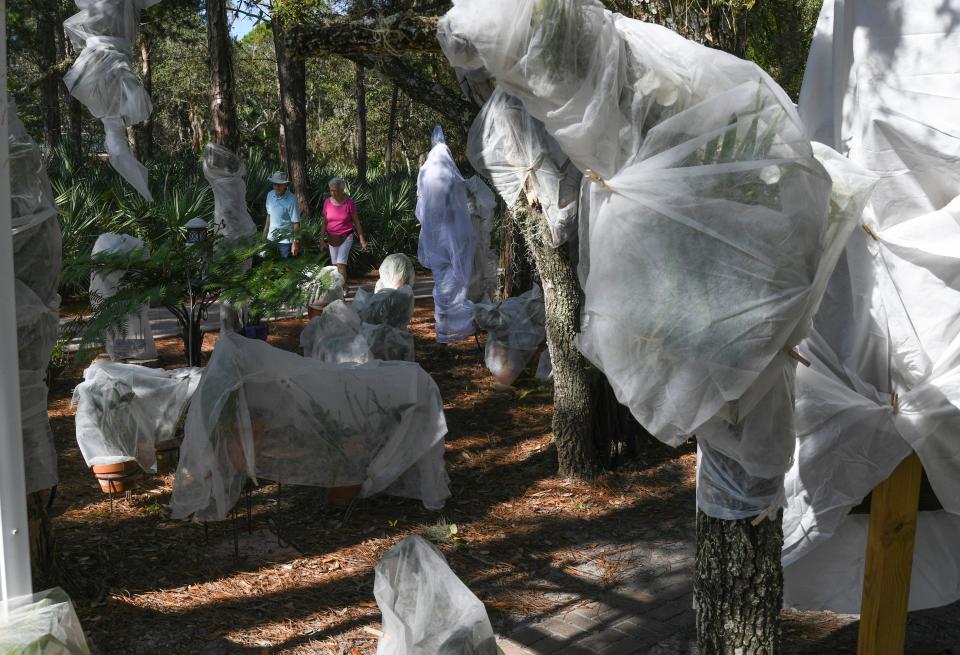Tips for protecting Florida plants during cold snaps
Specialty plant-covering material is widely available from local nurseries or landscape specialists. Good alternatives are sheets, burlap, or simple lengths of lightweight, inexpensive fabric like muslin. Try not to use heavy materials that will bend branches or compress the foliage. The best covering will be reusable. Shake it out, fold it neatly and store it so that it’s readily available to use again. ASI Landscape Management, Tampa, has these suggestions:
In-ground plants and garden beds
∎ In most cases, covering should be kept loose around the plant. If possible, minimize the cover’s contact with tender leaves and delicate stems. Some type of support structure or wire cage can be helpful.

∎ Plant covering should extend all the way to the ground for full protection, creating an “air pocket” around the plant that traps heat inside. Anchor the covering as necessary to prevent it from blowing away or shifting position.
∎ When the temperature rises or the winds die down, remove the covering.
∎ Avoid plastic sheeting. Although plastic might seem like an easy and effective way to shield your plants, it doesn’t “breathe,” and it tends to allow moisture to form on plant leaves, causing them to burn.
Potted plants and container gardens
∎ Extremely delicate flowering plants should, ideally, be moved indoors during a freeze. Even short-term exposure can cause leaf damage or prevent a plant from flowering. In extreme cases, cold can quickly kill a young plant.
∎ If the containers are too large, or if there are too many to bring indoors, it’s best to try to congregate them together as much as possible. Cover them in groups, in much the same way you would cover plants in the ground.
∎ Once temperatures rise, separate the containers as soon as possible, and return them to their original places in the garden and the rejuvenating benefits of fresh air and sunshine.
This article originally appeared on Treasure Coast Newspapers: How to protect Florida plants in cold weather

